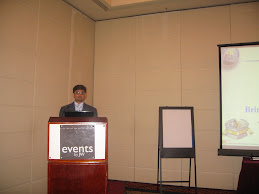V2FP2
V – Value
V – Value Stream
F – Flow
P – Pull
P - Perferction
The first V is for value, which can only be defined by ultimate customer. Value is created by producer. We must understand what values customer is looking for. Suppose you have to go from small city (without airport) in
So the clear understanding and perception of customer requirement and values is very important. The value streams need to be streamlined and waste steps has to be removed. Then analyze the flow, the next F in Lean philosophy stands for Flow. For speed to the market through the waste ridden value streams, we have to make our product and services flow without any bottlenecks, hurdles and back tracking with good uptime and capability of value stream processes.
It is like the traffic flow and eliminating all these hurdles to the traffic flow, we can probably lead to smooth and fast flow of traffic. This could lead to reaching the destination at right time with least lead time with great confidence level and variation. The road needs to be balanced, capable, have good uptime, clear visual signals and fast on road processes like toll gate clearance etc. Similarly, we need to have balanced lines, smooth straight line flow of material, good process capability, good uptime, proper 5 S and visual management/ standardization for better flow. This leads to fast and on time deliveries. Reach continuous uninterrupted movement of the product or service. Strive towards reduced strategic inventory.
The next P Pull helps customer pull material out of this system as and when required. So Pull and Kanban systems helps delivering right product in right quantity at right time. Control the flow of production by replacing only what has been consumed
The last P is perfection, for sustaining the gains achieved by implementing the lean systems and leads to continuous improvement system


